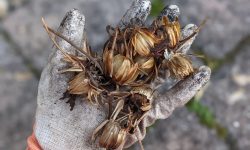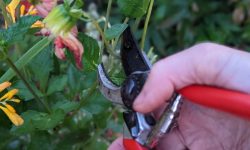Hibiscus, with its tropical charm and radiant blooms, can transform any garden bed or patio container into a lush paradise. Whether you’re growing hardy hibiscus in cooler climates or tropical varieties in sun-drenched spots, pruning plays a pivotal role in shaping the plant’s beauty and encouraging vibrant, long-lasting flowers. But knowing exactly when and how to prune—especially when your plant lives in a pot or a garden bed—can be the key to unlocking its full blooming potential.
In this guide, you’ll discover how to prune hibiscus effectively, whether it’s rooted in a container or flourishing in open ground. With simple, science-backed tips and an easy-to-follow approach, you’ll not only improve plant health and structure but also enhance the bloom cycle, reduce legginess, and encourage lush new growth that turns heads season after season.
Table of Contents
ToggleWhy Pruning Hibiscus Matters More Than You Think

Pruning hibiscus is not just a cosmetic step—it’s a crucial practice that influences every aspect of the plant’s health, structure, and blooming potential. Without regular and thoughtful pruning, hibiscus can become leggy, overcrowded, or even prone to disease due to poor air circulation. As branches grow inwards or overlap, sunlight struggles to reach the inner canopy, leading to fewer buds and smaller, less vibrant blooms.
For tropical hibiscus grown in pots, pruning helps maintain a compact shape that suits container living, preventing root stress and imbalance. In garden-grown hardy hibiscus, strategic cuts can encourage stronger stems, better winter survival, and earlier flowering when the growing season starts. Pruning also stimulates the development of new shoots, which are where most flower buds form. By removing old wood or weak growth, you’re guiding the plant’s energy into the most productive areas.
Beyond aesthetics, pruning is a reset button for your hibiscus—it helps control pests, reduce fungal issues, and manage plant size effectively. Whether you aim for a bushy container plant or a vibrant landscape centerpiece, proper pruning ensures your hibiscus continues to thrive, bloom heavily, and stay healthy year after year.
Understanding the Natural Growth Pattern of Hibiscus
To prune hibiscus effectively, it’s essential to first understand how the plant naturally grows. Hibiscus tends to grow upright with a tendency to produce long, slender stems that can become leggy or sparse over time if not managed. The plant produces flowers on new growth, meaning that pruning encourages the development of fresh shoots which will bear the next flush of blooms.
Tropical hibiscus varieties are typically fast-growing, evergreen, and can bloom year-round in warm climates, producing buds along the tips of new branches. Hardy hibiscus, on the other hand, dies back in winter and regrows from the base in spring, often sending up thick stems that flower in mid to late summer. Recognizing whether your plant is tropical or hardy helps determine how it should be pruned and when.
The plant’s growth is also influenced by light exposure, temperature, and container space. In ideal conditions, hibiscus plants will respond quickly to pruning by branching out and becoming fuller, with more opportunities for flowers to form. Pruning in line with this natural cycle not only supports healthy structure but also maximizes blooming potential.
Best Time to Prune Hibiscus in Pots
Pruning potted hibiscus is best done in early spring, just as the plant begins to show signs of new growth but before it fully leafs out. This timing encourages bushier development and prepares the plant for a strong blooming season. Spring pruning allows the hibiscus to recover quickly in the warming weather, using the lengthening days and rising temperatures to push out vigorous shoots and vibrant flowers.
For tropical hibiscus, which thrives outdoors during warmer months, it’s essential to wait until the risk of frost has passed if your plant spent winter indoors. Once moved back outside, give it a few days to acclimate before pruning. Avoid heavy pruning in late fall or winter, as the plant is likely entering dormancy or resting, and cutting it back then can stress it or reduce next season’s flowers.
If needed, light shaping or removal of dead or leggy stems can be done during the growing season. However, reserve any major cuts for that early spring window when the plant is gearing up for its most active phase.
How to Prune Potted Hibiscus for Stronger Branching
To encourage a bushier, well-balanced hibiscus in pots, pruning should be done with care, precision, and timing. Begin by identifying the longest, leggiest stems that have few side shoots. These stems often dominate the plant’s energy flow, limiting branching. Use sharp, sterilized pruning shears to cut these stems back by one-third to just above a leaf node or outward-facing bud. This technique signals the plant to redirect energy into producing new lateral shoots below the cut, fostering denser growth.
When pruning for branching, symmetry is key. Rotate the pot as you prune to ensure even shaping from all angles. This helps prevent one-sided or top-heavy development. It’s also helpful to remove inward-growing or crossing stems that crowd the center, which not only improves air circulation but also makes room for new branches to emerge outward and fill the pot attractively.
For younger hibiscus plants in containers, early pinching—removing the soft tips of new growth—can dramatically increase branching potential. Doing this every few weeks during the active growing season creates a compact, lush plant that blooms more profusely. As the plant matures, switch to slightly deeper cuts to maintain shape and vigor.
After pruning, place your potted hibiscus in a sunny, sheltered location to support recovery and stimulate new growth. Water and fertilize regularly, since branching consumes energy. With consistent pruning and proper aftercare, your hibiscus will develop into a robust, floriferous specimen with strong, well-distributed branches.
Best Time to Prune Hibiscus in Gardens
The ideal time to prune garden hibiscus depends on your local climate and whether your plant is a tropical or hardy variety. In general, late winter to early spring is considered the best time for a major pruning session. At this stage, the plant is still dormant or just beginning to break dormancy, allowing you to shape it before new growth emerges. Pruning during this window encourages vigorous growth as the weather warms, setting the stage for a vibrant, full blooming season.
In warmer regions where tropical hibiscus grows year-round, light pruning can also be done in late summer or early fall to manage size and shape. However, avoid heavy pruning too late in the season, as it can stimulate new growth that may be damaged by an unexpected cold snap. For hardy hibiscus, especially those in temperate zones, wait until all risk of frost has passed before making any significant cuts.
Keep in mind that pruning too early in the winter can expose freshly cut stems to cold damage, while pruning too late in spring may remove emerging flower buds. By timing your pruning carefully—just as new green shoots appear—you give your hibiscus the best opportunity to grow vigorously and bloom beautifully throughout the growing season.
How to Prune Garden Hibiscus for Vigor and Bloom
Pruning garden hibiscus with a focus on plant vigor and abundant blooms requires a strategic, technique-based approach that balances structure, airflow, and bud development. Begin by identifying the main framework of your hibiscus shrub. This structural pruning ensures that your plant maintains a balanced, open center, which improves light penetration and air circulation—both of which are crucial for reducing fungal issues and encouraging uniform growth.
Use clean, sharp bypass pruners to make precise angled cuts just above a node or a leaf junction. This promotes healthy regrowth and prevents dieback. Start by removing any dead, diseased, or crossing branches, focusing especially on older wood that no longer produces flowers. These older stems can be cut back to the base or to a strong outward-facing bud. Doing so redirects the plant’s energy into younger, more productive stems, which are more likely to bear large, vibrant blooms.
To stimulate vigorous lateral growth—which leads to more flower-bearing tips—selectively cut back one-third to one-half of each stem. On mature hibiscus, aim to reduce the height by about one-third each season to manage size while retaining blooming potential. Make sure to leave at least two to three nodes on each pruned stem to support regrowth.
In colder regions, delay structural pruning until after the last frost. In warm climates, late winter to early spring is the ideal time. If your hibiscus is particularly woody or overgrown, you may need to perform rejuvenation pruning by cutting back the entire plant to 6–12 inches above ground level. This encourages an entirely new flush of healthy growth, although blooming may be delayed by a season.
Consistent yearly pruning not only enhances flowering but also keeps your garden hibiscus youthful, shapely, and less prone to pests and diseases.
Tools and Preparation Before Pruning
Proper preparation and the right tools are essential for a successful hibiscus pruning session. Begin by selecting clean, sharp pruning tools to ensure smooth cuts that do not crush or tear the stems. A pair of bypass pruning shears is ideal for small to medium branches, while loppers may be needed for thicker, woody stems. For very fine or precision trimming, garden scissors or snips can offer better control.
Sterilize all tools before you begin to reduce the risk of transmitting diseases between plants. This can be done by wiping the blades with rubbing alcohol or a solution of one part bleach to nine parts water. Having a clean cloth or paper towel nearby is helpful to remove sap buildup during the process.
Before making any cuts, examine the plant carefully. Identify dead, weak, or overcrowded branches, and take note of the overall shape you want to maintain or encourage. It’s also helpful to have gloves to protect your hands from sap and accidental nicks, especially when handling larger or woody hibiscus varieties.
Lastly, make sure the plant is well-hydrated the day before pruning. A slightly moist hibiscus is less stressed and recovers more easily after pruning. Proper preparation not only improves the pruning outcome but also supports faster, healthier regrowth.
Signs Your Hibiscus Needs Pruning
Knowing when your hibiscus needs pruning helps keep the plant healthy and encourages continuous flowering. One of the first signs is the appearance of leggy stems—long, bare branches with few leaves or buds. These indicate that your plant is stretching for light and needs shaping to promote fuller growth.
Another common sign is reduced blooming. If your hibiscus flowers less than usual or blooms only at the ends of branches, it may need pruning to redirect energy and stimulate new flower-producing shoots. Yellowing or dead leaves, along with dry or brittle stems, are also indicators that some parts of the plant are no longer productive and should be removed.
Crossing branches, especially in the center of the plant, can reduce airflow and invite pests or disease. Regular pruning improves structure and light penetration. Lastly, if the plant has grown too large for its pot or space in the garden, pruning helps control its size and maintains its overall form.
By watching for these signs, you’ll know exactly when your hibiscus needs a thoughtful trim to thrive.
Post-Pruning Care for Healthy Regrowth
After pruning, water your hibiscus deeply to support recovery but avoid overwatering. Place potted plants in bright, indirect light to reduce stress, and for garden hibiscus, ensure good drainage and consistent moisture, especially in hot weather.
Wait about one to two weeks before applying a balanced fertilizer to help regrowth. Once new shoots appear, you can switch to a bloom-boosting formula.
Monitor for pests or fungal issues, as fresh cuts are more vulnerable. Remove yellowing leaves or spent flowers promptly to keep the plant healthy and focused on growth.
With the right care, your hibiscus will bounce back quickly, producing lush foliage and vibrant blooms.
Common Mistakes to Avoid When Pruning
Pruning hibiscus may look simple, but several frequent errors can weaken the plant or reduce its blooming capacity. Here’s a breakdown of the most common mistakes and their impact:
Pruning Too Hard or at the Wrong Time
One major mistake is cutting back too much at once or pruning during the wrong season. Trimming in late fall or mid-winter, especially in colder regions, can leave the plant vulnerable to frost damage and slow recovery. Over-pruning may also stress the plant and delay blooming in the upcoming season.
Using Dull or Dirty Tools
Pruning with unclean or dull shears can crush plant tissue, making the wounds prone to infection by bacteria or fungi. This slows down healing and can lead to branch dieback or overall plant decline.
Making Cuts in the Wrong Spot
Cutting too close or too far from a leaf node is another common issue. Cuts made too close can damage emerging buds, while cuts made too far leave unnecessary stubs that may dry out or become entry points for disease.
Ignoring Dead or Weak Branches
Focusing only on shaping the top while ignoring old, diseased, or non-productive wood is a missed opportunity. These branches use up nutrients and reduce airflow, weakening the entire plant structure.
Pruning Without Considering Plant Structure
Failing to observe the overall shape before pruning can lead to an unbalanced or crowded canopy. Poorly planned cuts may result in awkward growth patterns, reduced air circulation, and diminished sunlight exposure within the plant.
Avoiding these mistakes helps maintain a healthy, well-shaped hibiscus that produces vibrant blooms throughout the growing season.
Encouraging Continuous Bloom After Pruning
To maintain consistent blooming after pruning, start by feeding your hibiscus with a balanced fertilizer high in phosphorus. This encourages strong bud development while avoiding excessive nitrogen, which causes leafy growth instead of flowers.
Ensure the plant receives full sun for at least six hours daily, which fuels new blooms. Maintain consistent watering—keep the soil moist but not soggy—to support healthy regrowth without risking root rot.
Deadheading spent flowers regularly helps redirect energy into new blooms. Snip off faded blossoms just above a healthy leaf node to stimulate further budding.
Also, keep an eye out for pests like aphids or spider mites that may target fresh growth. Use neem oil or insecticidal soap if needed. With the right care, your hibiscus will reward you with vibrant, continuous flowers all season long.
FAQ: Common Questions About Pruning Hibiscus
When is the best time to prune hibiscus for healthy growth?
For tropical hibiscus, the ideal time to prune is in early spring when the risk of frost has passed, and new growth is beginning to emerge. This timing encourages robust branching and maximizes blooming during the warmer months. For hardy hibiscus, late winter or very early spring is preferable, just before new shoots appear. Avoid pruning during the fall or early winter, as it may interfere with the plant’s natural dormancy cycle.
Can I prune hibiscus while it’s blooming?
While it’s technically possible to prune during bloom, it’s not recommended if your goal is to encourage more flowers. Pruning during bloom often removes buds that are about to open. For best results, wait until the blooming cycle ends, then prune back to shape the plant and promote new flowering branches for the next cycle.
How much of the hibiscus should I prune at once?
As a general rule, avoid removing more than one-third of the plant’s total size in a single pruning session. For potted hibiscus, light and frequent pruning is better than heavy cuts, as it helps maintain shape without stressing the plant. In garden hibiscus, more substantial pruning can be done in early spring to rejuvenate older stems, but always leave enough healthy foliage and nodes for recovery.
What if my hibiscus looks leggy or sparse?
A leggy hibiscus often indicates insufficient pruning or lack of sunlight. To correct this, you can cut back long, weak stems by about a third of their length in early spring. Make cuts just above a leaf node facing outward. This technique helps the plant redirect energy into fuller side growth, creating a more compact and lush appearance over time.
Is it okay to prune hibiscus in the fall?
Pruning hibiscus in fall is generally discouraged, especially in cooler climates. Cutting the plant before dormancy can lead to tender new growth that is easily damaged by cold weather. It’s better to wait until the plant is ready to wake up in spring before making any significant cuts. However, removing dead, diseased, or damaged branches at any time is perfectly fine and beneficial for overall health.
Conclusion: Shaping Hibiscus for a More Rewarding Garden
Pruning hibiscus may seem intimidating at first, but with the right approach and timing, it becomes one of the most rewarding tasks in your garden. Whether your plant lives in a pot or thrives in the soil, regular pruning helps it stay healthy, compact, and generous with blooms.
By understanding your plant’s growth cycle, choosing the right moment, and using clean cuts, you’re not just trimming branches—you’re sculpting the future of your hibiscus. Each snip is a step toward a fuller, more vibrant display that rewards your care with every colorful flower.






